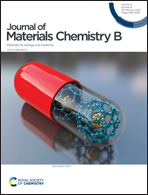Mg-based implants with a sandwiched composite coating simultaneously facilitate antibacterial and osteogenic properties
Abstract
Insufficient antibacterial effects and over-fast degradation are the main limitations of magnesium (Mg)-based orthopedic implants. In this study, a sandwiched composite coating containing a triclosan (TCS)-loaded poly(lactic acid) (PLA) layer inside and brushite (DCPD) layer outside was prepared on the surface of the Mg–Nd–Zn–Zr (denoted as JDBM) implant. In vitro degradation tests revealed a remarkable improvement in the corrosion resistance and moderate degradation rate. The drug release profile demonstrated a controllable and sustained TCS release for at least two weeks in vitro. The antibacterial rates of the implant were all over 99.8% for S. aureus, S. epidermidis, and E. coli, demonstrating superior antibacterial effects. Additionally, this coated JDBM implant exhibited no cytotoxicity but improved cell adhesion and proliferation, indicating excellent cytocompatibility. In vivo assays were conducted by implant-related femur osteomyelitis and osseointegration models in rats. Few bacteria were attached to the implant surface and the surrounding bone tissue. Furthermore, the coated JDBM implant exhibited more new bone formation than other groups due to the synergistic biological effects of released TCS and Mg2+, revealing excellent osteogenic ability. In summary, the JDBM implant with the sandwiched composite coating could significantly enhance the antibacterial activities and osteogenic properties simultaneously by the controllable release of TCS and Mg2+, presenting great potential for clinical transformation.

- This article is part of the themed collection: 2024 Journal of Materials Chemistry B HOT Papers


 Please wait while we load your content...
Please wait while we load your content...